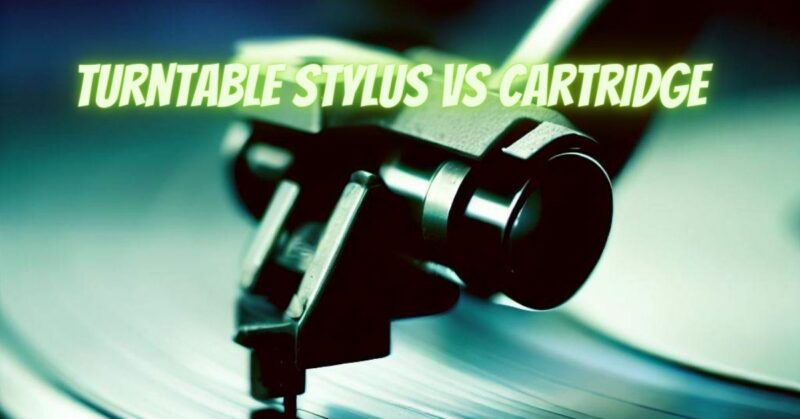Turntable styli and cartridges are two of the most important components of a vinyl playback system. The stylus is the needle that makes contact with the record grooves, and the cartridge is the housing that holds the stylus and converts its vibrations into an electrical signal.
Stylus
The stylus is a very small and delicate object, typically made of diamond or sapphire. It is responsible for accurately tracking the record grooves and reproducing the music that is encoded in them. A worn or damaged stylus can cause a number of problems, including distortion, skipping, and damage to the records themselves.
Cartridge
The cartridge is a more complex component than the stylus. It contains the cantilever, which is the arm that holds the stylus, as well as the electrical generator that converts the stylus’ vibrations into an electrical signal. The cartridge also has a number of other components, such as the suspension system and the terminals that connect it to the turntable and amplifier.
Differences between styli and cartridges
The main difference between a stylus and a cartridge is that the stylus is a removable component, while the cartridge is a permanent fixture on the turntable. This means that you can replace the stylus when it becomes worn or damaged, but you will need to replace the entire cartridge if it fails.
Another difference between styli and cartridges is that styli are typically classified by their shape, while cartridges are classified by their output type. The most common stylus shapes are conical, elliptical, and line contact. Conical styli are the least expensive, but they also have the least tracking ability. Elliptical and line contact styli are more expensive, but they also have better tracking ability and can reproduce more detail in the music.
Cartridges are classified by their output type, which can be either moving magnet (MM) or moving coil (MC). MM cartridges are more common and less expensive than MC cartridges. MC cartridges offer better sound quality, but they are also more delicate and require a special type of phono preamplifier.
Choosing the right stylus or cartridge
When choosing a stylus or cartridge, it is important to consider the following factors:
- Your budget: Styli and cartridges can range in price from a few dollars to several hundred dollars, so it is important to set a budget before you start shopping.
- Your turntable: The type of turntable you have will limit the types of styli and cartridges that you can use. Be sure to check your turntable’s owner’s manual for compatibility information.
- Your listening habits: If you are a serious audiophile, you may want to invest in a high-end stylus or cartridge. However, if you are just getting started with vinyl, you can get away with a more affordable option.
The stylus and cartridge are two of the most important components of a vinyl playback system. By understanding the differences between these two components and choosing the right ones for your needs, you can ensure that you get the best possible sound quality from your records.
Here are some additional tips for choosing and maintaining your stylus and cartridge:
- Replace your stylus regularly. Styli typically have a lifespan of 200-1000 hours, depending on the type of stylus and the frequency of use. It is important to replace your stylus regularly to avoid damage to your records.
- Clean your stylus regularly. Use a stylus cleaner to remove dust and dirt from the stylus tip. This will help to improve sound quality and extend the life of your stylus.
- Handle your cartridge with care. The cartridge is a delicate component, so be careful not to drop it or bump it.
- Store your cartridge properly. When you are not using your turntable, store the cartridge in a dust cover or protective case. This will help to keep it clean and protected from damage.
By following these tips, you can ensure that your stylus and cartridge last for many years to come and that you continue to enjoy the best possible sound quality from your vinyl records.


